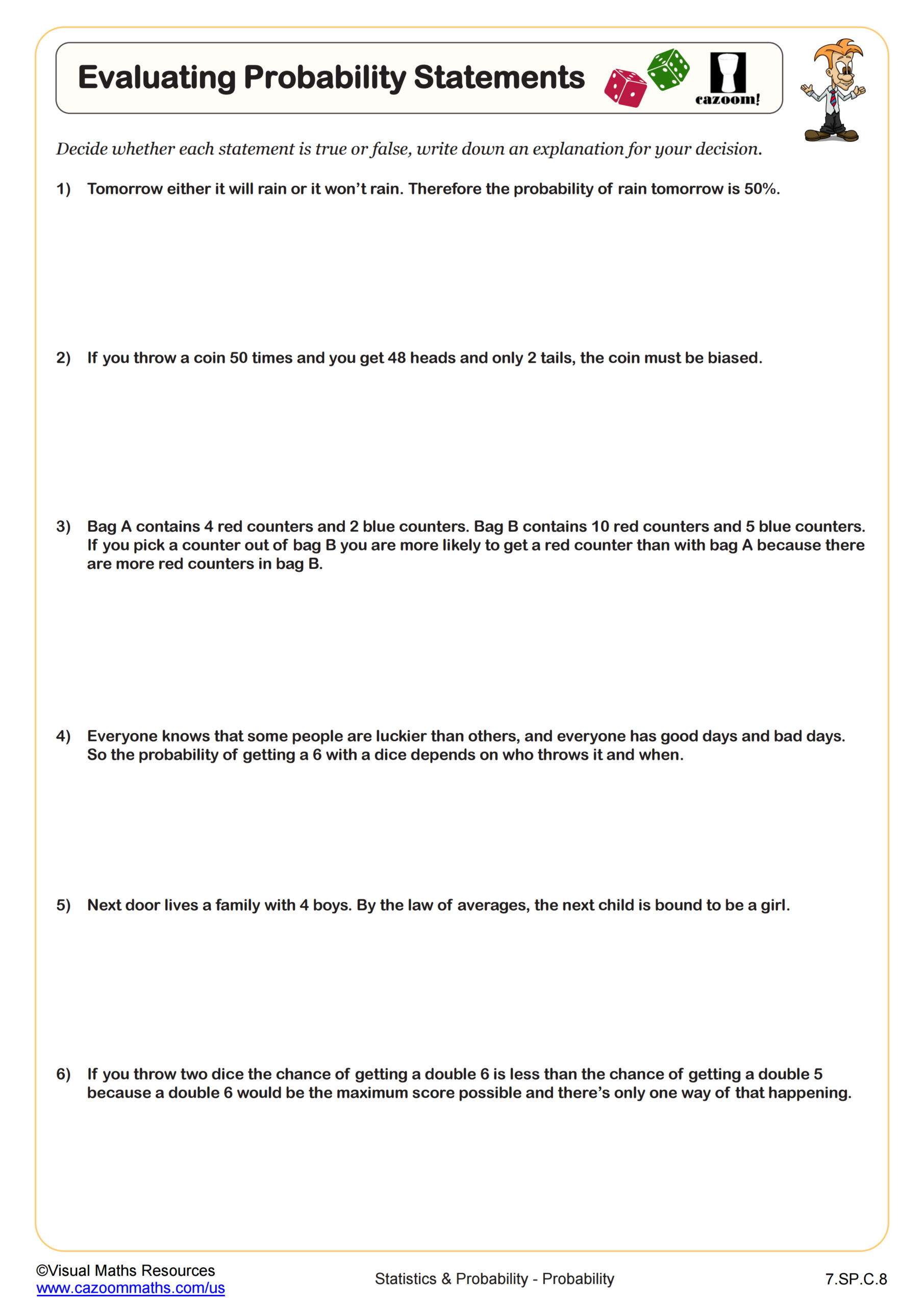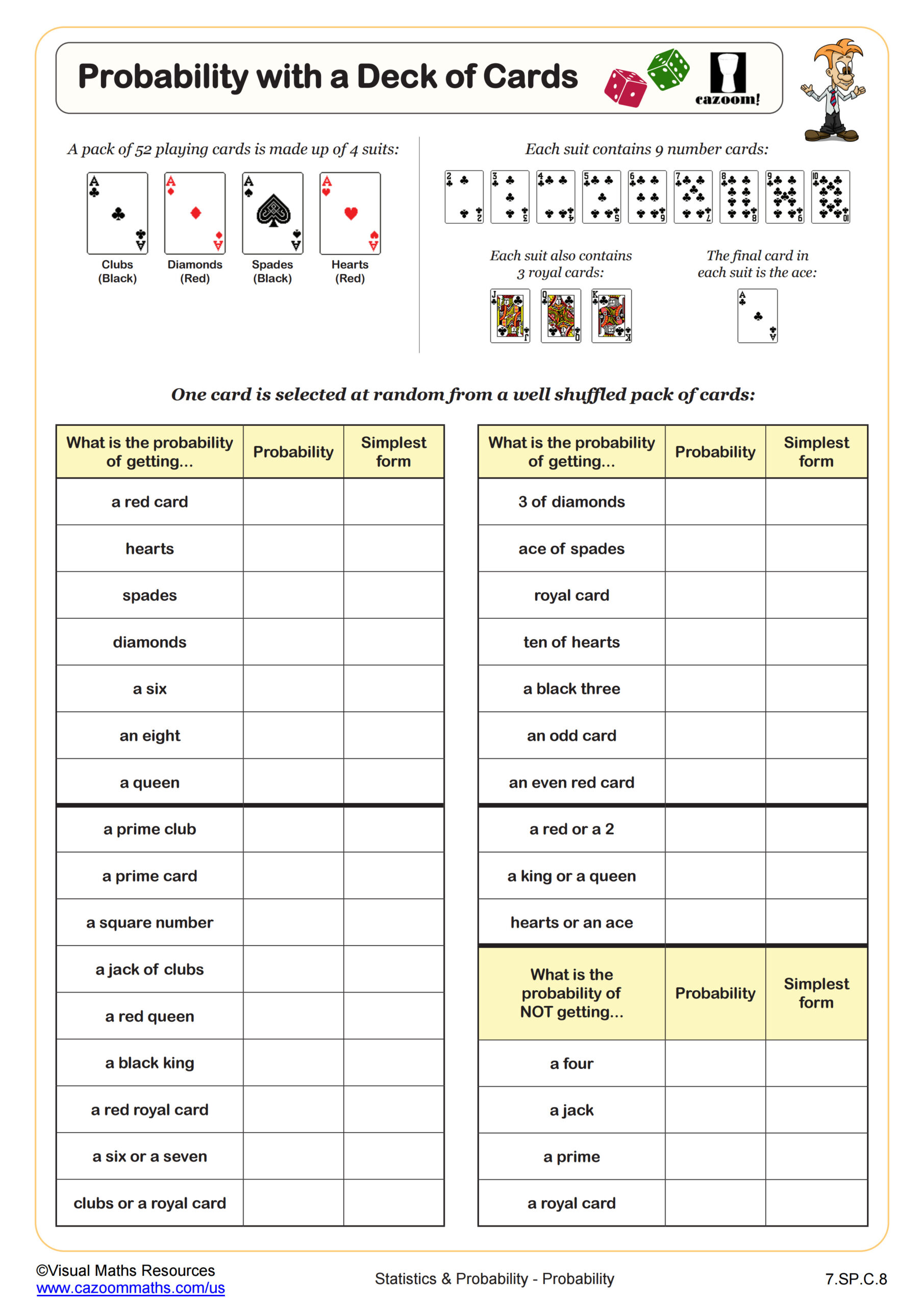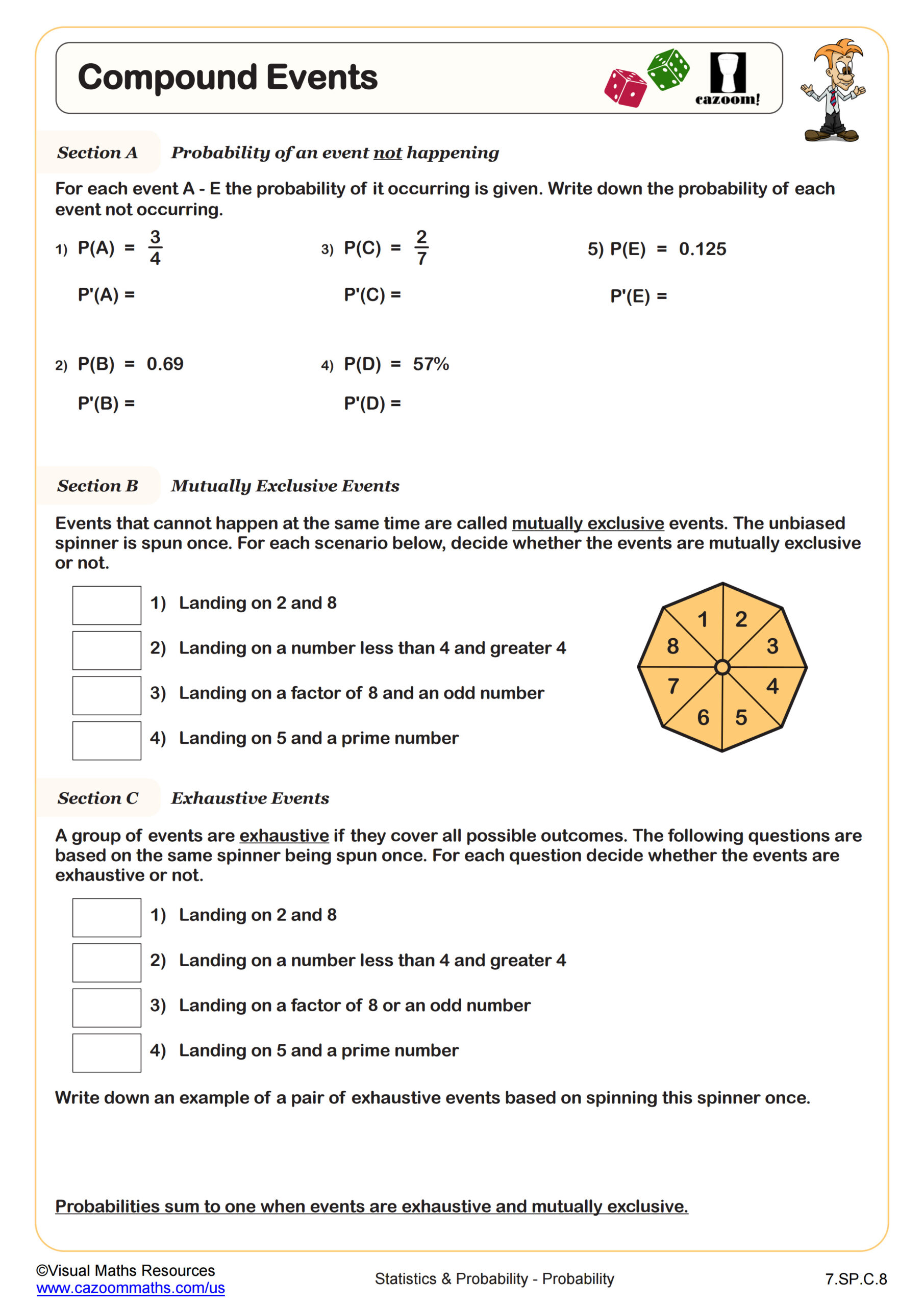Loading...
Back to:
Evaluating Probability Statements WORKSHEET
Suitable for Grades: 7th Grade
CCSS: 7.SP.C.8
CCSS Description: Find probabilities of compound events using organized lists, tables, tree diagrams, and simulation. a. Understand that, just as with simple events, the probability of a compound event is the fraction of outcomes in the sample space for which the compound event occurs. b. Represent sample spaces for compound events using methods such as organized lists, tables and tree diagrams. For an event described in everyday language (e.g., “rolling double sixes”), identify the outcomes in the sample space which compose the event. c. Design and use a simulation to generate frequencies for compound events. For example, use random digits as a simulation tool to approximate the answer to the question: If 40% of donors have type A blood, what is the probability that it will take at least 4 donors to find one with type A blood?
Evaluating Probability Statements WORKSHEET DESCRIPTION
This worksheet consists of six different statements that will really get your learners thinking about probability. Students must decide whether each statement is true or false and write their reasoning alongside their answer. You and your students will discuss when there are two possible outcomes to an event, does that necessarily mean each outcome has an equal chance?, as well as biased coins, luck vs probability, and more. All statements are based around ‘real life’ scenarios such as children being born, rolling dice, and the weather.
Use alongside our worksheets on the language of probability as an introduction to the topic.




